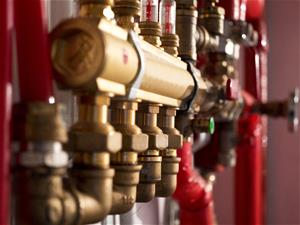 © iStock/Getty Images Plus/alder7
© iStock/Getty Images Plus/alder7
As secretariat of the ANSI-accredited A10 standards committee, ASSP collaborates with stakeholders to develop industry consensus standards that address safety requirements for construction and demolition operations.
A common safety issue in construction operations is pressure testing of steel and copper piping systems. To address the hazards associated with pressure testing, the A10 committee is currently developing A10.35, Safe Pressure Testing of Steel and Copper Piping Systems. This standard will provide those involved in the installation, modification, or repair of steel and/or copper piping systems the safe work practices and pressure testing procedures necessary to avoid injuries that can result from pressure testing failures.
The need for A10.35 arose primarily from two factors:
-
The hazards associated with pressure testing failures can result in severe injuries and fatalities (SIFs).
-
While industry standards address pressure testing, including ASME B31.1-2012, Power Piping, and ASME 31.3-2016, Process Piping, those standards focus more on the pressure testing process rather than pressure testing safety.
“In some cases, pressure testing is still done incorrectly, and the results can and do cause fatalities, severe injuries and property damage,” says Pete Chaney, chair of the ANSI/ASSP A10.35 subcommittee. “Affected safety professionals and employers need to understand the potential hazards and best known safe work practices so that they can be conveyed to pipefitters, plumbers and mechanical service technicians.”
Stored energy is the major hazard associated with pressure testing of steel and copper piping systems. When pressure testing fails and stored energy is released, components such as pipe fittings, valves, gauges or flanges can be propelled at high speeds, creating a very serious hazard.
Common mistakes that can lead to failures include exceeding the maximum safe test pressure, neglecting to use a pressure relief valve or failing to inspect the piping system being tested. A10.35 will provide a structure for establishing job-specific, pre-task plans for pressure testing as well as training on and implementation of the standard’s requirements.
“To implement the standard effectively, safety professionals will need to become familiar with its requirements and train workers about the potential hazards and safe work practices,” explains Chaney. “Workers who are complying with the standard will follow specific safe work practices and will, therefore, be protected from the most common pressure testing hazards.”
A draft of A10.35 is anticipated for late 2018. Those interested in participating on the A10.35 subcommittee should contact Pete Chaney or Vice Chair Cheryl Ambrose.
Understanding Risk Management and Assessment
We have the resources and expert guidance you need to improve how you assess risks to prevent hazards, protect workers and safeguard equipment.
Learn more